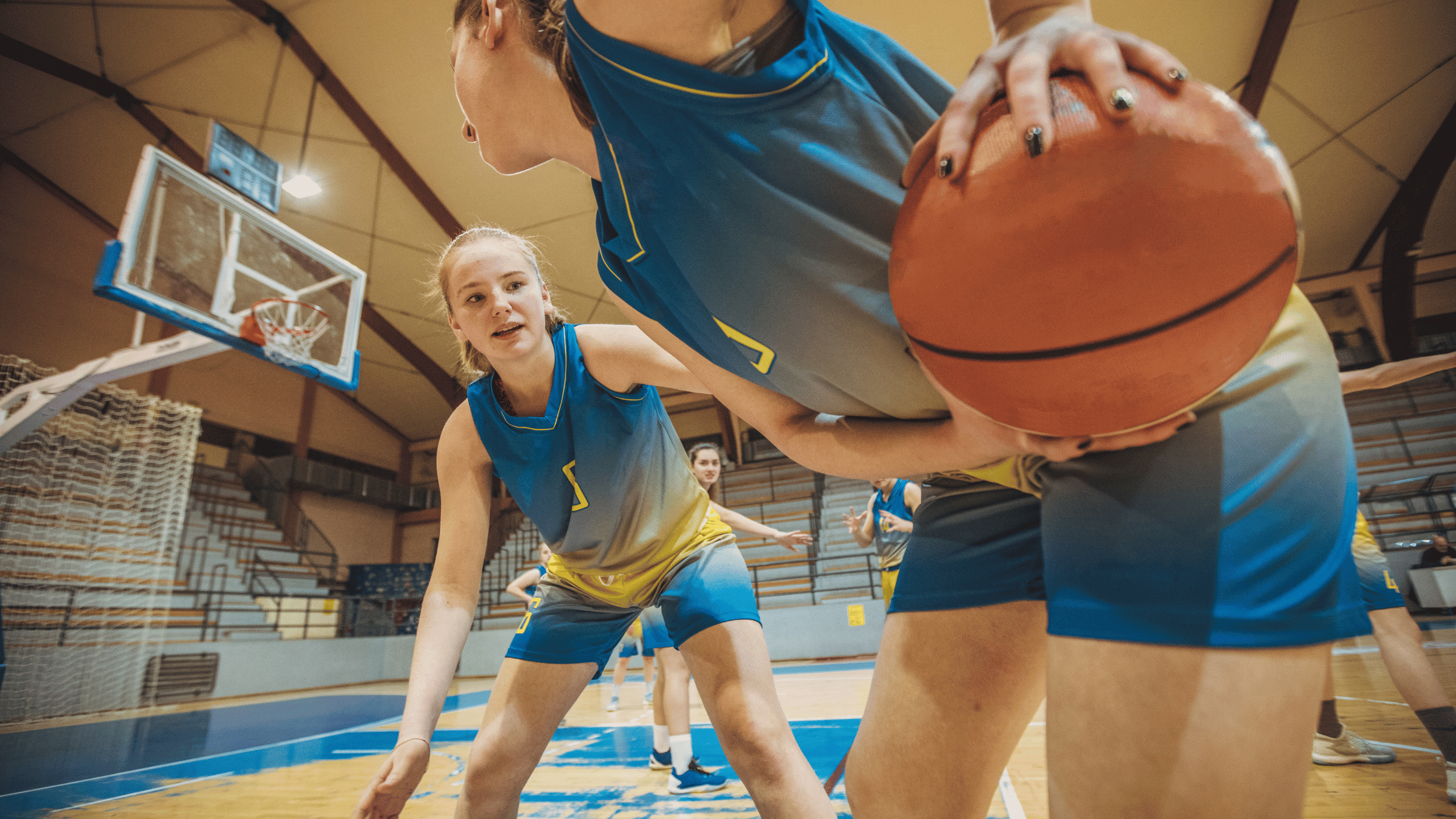The Most Common Women's Basketball Injuries: Physical Therapy's Role in Prevention

Physical Therapist, PT, DPT // EW Motion Therapy Meadowbrook
Women's basketball is an exciting and fast-paced sport loved by many. While the game is incredibly engaging, it also comes with the risk of injuries. This guide will dig into the most common injuries faced by female basketball players, best practices for prevention, and how physical therapy can assist in preventing and treating these injuries.
Most common injuries in women's basketball
Ankle sprains
What it is: Ligaments in the ankle stretch or tear, usually due to a misstep, twisting, or collision.
Prevention: Strengthening exercises for your ankles and balance training can help. Also, consider ankle braces for additional support.
How PT helps: Physical therapists can provide exercises that improve your ankle stability and range of motion, accelerating the healing process.
ACL injuries
What it is: The anterior cruciate ligament (ACL) in your knee can partially or fully tear during abrupt direction changes or when landing a jump incorrectly.
Prevention: ACL-specific exercises and drills can make the ligament stronger and more resistant to tears.
How PT helps: Physical therapy can be instrumental in injury prevention, as well as rehab for non-surgical injuries. Post-surgery, a physical therapist will guide you through a recovery regimen to restore knee function.
Finger injuries
What it is: Jamming a finger against the ball or an opponent may result in sprains, dislocations, or fractures.
Prevention: Proper ball-handling techniques can reduce the risk. Finger taping and splints provide extra support.
How PT helps: Finger exercises can help regain movement and strength, while heat/cold treatments can alleviate pain.
Muscle strains
What it is: Overstretching a muscle can cause strains, often in the legs or back.
Prevention: Consistent stretching and warm-up routines can keep muscles flexible and less prone to strains.
How PT helps: Therapists use deep tissue massage and targeted exercises to relieve tension and hasten recovery.
Concussions
What it is: Trauma to the head from a fall or collision can lead to a concussion.
Prevention: Always be aware of your surroundings and consider using padded headgear.
How PT helps: Vestibular therapy can help manage the dizziness and balance issues that sometimes follow a concussion.
Best prevention methods
- Proper warm-up and cool-down
- Warm-up: Start with light jogging or cycling to increase blood flow.
- Cool-down: Gentle stretching and hydration help flush out toxins.
- Strength training
- Core and leg exercises like squats and planks build muscles that protect your joints.
- Proper footwear
- Choose shoes with grip and ankle support to minimize the risks of slips and sprains.
- Rule adherence
- Familiarize yourself with the game's rules to avoid fouls that could lead to injuries.
- Regular rest
- Sufficient sleep and off days let muscles heal, reducing future injury risk.
How physical therapy can help
- Individualized programs: A physical therapist can identify your weak areas and design a prevention program.
- Recovery aid: Therapists guide your rehab journey, ensuring a faster and more efficient healing process.
- Pain management: Techniques like dry needling or ultrasound can relieve persistent pain.
- Gait and movement analysis: A comprehensive evaluation helps fine-tune your movements, making them safer and more efficient.
- Education: Physical therapists educate you on proper exercise techniques and body mechanics, reducing your injury risk.
While the thrills of women's basketball come with their set of risks, adequate preparation and precaution can greatly mitigate these hazards. Physical therapy is an invaluable resource for preventing injuries and facilitating a smooth recovery journey. Remember, the best offense is a good defense—especially regarding your health. Our EW Motion Therapy specialists love helping athletes work toward their goals with sport-specific programming and individualized treatment plans. If you’re curious about what else physical therapy can do for you, click the button below to download our answers to 20 frequently asked questions.


